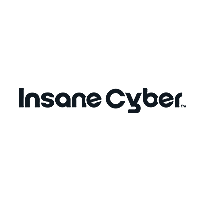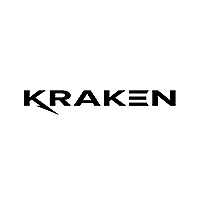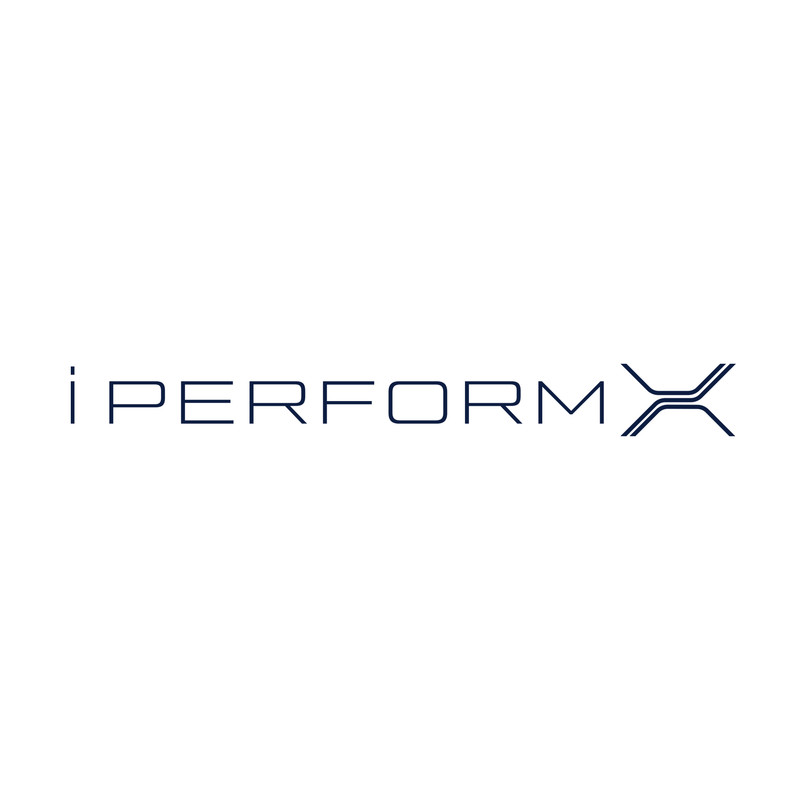Solicitation 4.0
Inviting global companies, startups and academia to address challenges in areas of AI, communications, maritime and cybersecurity.
Apply multiple times!
Individual
participation
The challenge has ended and all enquiries are now closed.
Cap Vista seeks innovative solutions to address challenges published on this website. We focus on accelerating the adoption of commercial technologies to solve real challenges at speed.
We publish challenge statements and invite global companies, startups and academia to submit proposals which could enhance Singapore's national security.
After evaluating the submitted proposals, we will invite shortlisted participants to pitch their proposals and to address any queries from our evaluation panel which will comprise all relevant parties.
Each successful participant will be awarded a fully-funded trial that covers the costs of validating their solution for our use case(s). The trial may be in the form of proofs-of-concept, experiments, demonstrations, or any other reasonable ideas as proposed in the submitted application.

WHAT IT MEANS TO YOU AS AN INNOVATOR?
We aim to award suitable companies, startups and academia within 60 days after the submission deadline. Awarded companies, startups and academia will gain the opportunity to work directly with our end users to showcase and validate your solutions for national security applications. If your solution demonstrates success and good potential, we aim to scale your solutions quickly.
OVERVIEW OF CHALLENGE STATEMENTS

1. We are seeking solutions capable of differentiating between Operational Technology (OT) system faults and cyber threats.
1. We are seeking solutions capable of differentiating between Operational Technology (OT) system faults and cyber threats.
Context
Operational Technology (OT) systems monitoring and controlling critical infrastructure such as, power Supervisory Control and Data Acquisition (SCADA) or hydrogen production system, face a challenge in distinguishing system faults and malicious cyber threats. A genuine sensor failure and a sensor spoofing attack may produce identical anomalies. OT legacy systems may also make forensic analysis harder.
What We Are Looking For
- We are seeking for innovative solutions that could accurately differentiate OT system faults from cyber attacks at the sensor and controller levels.
Key Metrics
- Detection Performance i.e. false alarm rate.
- Detailed identification of fault or cyber attack.
Your Technology Solution Should Demonstrate
- Ability to differentiate cybersecurity threats and OT system faults across OT environments e.g. SCADA controller versus hydrogen production system controller.
- Capability to detect in both legacy and modern OT networks.
- User friendly dashboard or interface to alert OT users of fault or cyber attack, with details of actions to be taken, or details of what the fault could be affecting.
Trial Specifications
- E.g. valve is open, when it should be closed in normal operation. Wrong values demonstrated on OT interface, leading users to think that the system is functioning normally, when it was already tampered with.
What We Are Not Looking For
- Theoretical research without practical and demonstrable applications.
- Solutions which are in-line or could affect the operations of the OT system.
- Solutions which will auto shutdown or take proactive actions when faults or threats are detected.
Option Cost
Cost of longer-term engagement beyond the trial.
This challenge statement is jointly sponsored by Cap Vista and ST Engineering. Each successful participant may be awarded a contract by Cap Vista to demonstrate their technology in a fully funded short-term trial and/or potential investment from ST Engineering.

2. We are seeking remote access solutions to secure the Operational Technology (OT) environment.
2. We are seeking remote access solutions to secure the Operational Technology (OT) environment.
Context
Operational Technology (OT) systems managing critical infrastructure such as power grids, manufacturing plants, and water treatment facilities increasingly require secure remote access capabilities. Traditional IP-based remote access solutions introduce risks from cyber threats, data leaks, and unauthorized access, potentially compromising system integrity. There is a critical need to enable secure, robust remote access without exposure to IP-based vulnerabilities and enforcing such access with hardware-based barriers for retention of physical isolation.
What We Are Looking For
We are seeking innovative solutions that provide non-IP, hardware-enforced, air-gapped remote access that is both ultra-low-latency and provides linear scalability. The solution should significantly enhance cybersecurity by physically eliminating IP-related vulnerabilities and ensuring secure remote operation and monitoring of OT environments.
Key Metrics
- Security resilience (resistance to cyber threats and unauthorized access).
- Performance reliability and operational uptime.
- Ease of integration into legacy and modern OT systems.
Your Technology Solution Should Demonstrate
- Non-IP remote access capability enforced at the hardware level, providing robust protection against external threats.
- Compatibility with diverse OT infrastructure, including legacy systems.
- Simple, intuitive interface for users to securely access and manage OT systems remotely.
- Clear operational visibility and audit trails to monitor and manage user activity and system interactions securely.
- Modular scalability to enable unlimited linear growth over time.
Trial Specifications
- Demonstration within a representative OT environment.
- Practical scenarios illustrating secure remote operations, management, and troubleshooting capabilities.
- Tests verifying immunity against IP-based cyber attacks, unauthorized access attempts, and data exfiltration scenarios.
- Proof of physical partition (air-gap) between OT environment and external environment.
What We Are Not Looking For
- IP-based remote access solutions.
- Solutions requiring extensive OT system downtime or significant infrastructure overhauls.
- Theoretical concepts lacking proven, demonstrable implementations.
Option Cost
Cost of longer-term engagement beyond the trial.
This challenge statement is jointly sponsored by Cap Vista and ST Engineering. Each successful participant may be awarded a contract by Cap Vista to demonstrate their technology in a fully funded short-term trial and/or potential investment from ST Engineering.

3. How might we protect sensitive data from cyber threats across various cloud configurations?
3. How might we protect sensitive data from cyber threats across various cloud configurations?
Context
Organisations are increasing their adoption of cloud-based capabilities on both commercial and on-premise clouds. Hence, it is crucial to safeguard sensitive data placed within these clouds from multi-cyber threats ranging from cloud service providers admin threats, insider admin risks, threats from external connections and 3rd party hardware/software vulnerabilities and side channels.
What We Are Looking For
Innovative Solutions that:
- Securely process, transmit and store sensitive data on commercial and/or on-premise clouds, and
- Prevent unauthorized access of sensitive data by advanced persistent threats (APTs)/insiders.
Key Metrics
- Ability to mitigate cybersecurity threats against sensitive data and/or neutralise/detect threats from APTs/Insiders.
- Feasibility for long-term deployment, maintenance, and operational scalability.
Your Technology Solution Should Demonstrate
- Effectiveness of solution against evolving threats such as cloud-based threats, unauthorised accesses, supply chain vulnerabilities, etc.
- Seamless security integration into existing cloud infrastructure without requiring complete system overhaul.
- Compliance with cybersecurity and data protection standards (eg. NIST 800.53) to maintain trust and operational security.
Trial Specifications
The solution will be assessed and tested in real or simulated cloud environments to assess its effectiveness against real-world cyber threats:
- Solutions’ internal security design and threat risk assessment.
- Solutions’ security properties and performance under different operational loads.
- Compatibility testing with existing third-party cloud vendor.
- Assessment of long-term security and resilience, including communication reliability, latency, and threat mitigation capabilities.
- Demonstration of workloads and security properties.
What We Are Not Looking For
- Theoretical models without practical and demonstrable applications.
- Solutions that require new cloud infrastructure instead of securing existing ones.
- Security frameworks that introduce significant performance degradation or are difficult to maintain at scale.
Option Cost
Cost of longer-term engagement beyond the trial.
This challenge statement is jointly sponsored by Cap Vista and ST Engineering. Each successful participant may be awarded a contract by Cap Vista to demonstrate their technology in a fully funded short-term trial and/or potential investment from ST Engineering.

4. We are seeking AI-powered platforms capable of ingesting multi-modal data to enhance ab initio aviation training programmes.
4. We are seeking AI-powered platforms capable of ingesting multi-modal data to enhance ab initio aviation training programmes.
Context
Ab initio aviation trainee programmes often follow a standardized ‘one-size-fits-all’ process, which may be inefficient and limiting in training outcomes. We are seeking AI-powered platform solutions that may ingest multi-modal data to streamline and personalize the experience for trainees and to enhance overall training outcomes.
What We Are Looking For
A single AI-powered platform solution that could ingest and analyse multi-modal data from sources including training management systems, courseware materials from learning management systems, simulation sessions or live flights to perform key functionalities such as:
- Presenting a customizable performance assessment dashboard to parties such as supervisors, instructors and trainees.
- Adapting and personalising trainees’ activities based on their strengths and weaknesses
- Extracting relevant data such training or performance records in open format for further analysis by parties.
- Executing training activities, such as next e-learning or simulation session and content, with minimal administrative workload and scheduling conflicts.
As part of the submission, you should:
- Specify data sources your solution can ingest, including supported open standards and data formats, and describe your solution’s functionalities.
- Share the cybersecurity standards the solution is certified to, if any.
- Where possible, share any demo videos or access to a sandbox environment. We may also provide content to support your demonstration.
- Share your solution’s technical readiness, including any track records with existing clients.
Key Metrics
- Functionalities and user-friendliness of solution
- Ability to ingest multi-modal data from multiple sources
- Ease for integration with emerging technologies such as extended reality-based systems, human performance sensors, or AI models
- Ability to scale
Your Technology Solution Should Demonstrate
AI- powered capabilities as described above.
Trial Specifications
The company should propose a minimal 3-month trial for users to assess your solution’s capabilities described above. During the trial, we may furnish information such as generic course content or planning constraints such as availabilities of equipment/personnel and/or weather conditions.
What We Are Not Looking For
- Concepts which need significant development work to realise a working product.
- Standalone training or learning management systems focusing only on academic knowledge or non AI-enabled analytics systems.
Option Cost
The company may propose as options:
- Subscription cost of your platform for 6, 12 and 24 months after the trial completion.
- Cost to integrate your solution to existing systems, via API or otherwise.

5. We are seeking cost-effective unmanned surface vessels (USVs) for logistics operations.
5. We are seeking cost-effective unmanned surface vessels (USVs) for logistics operations.
Context
Current maritime logistic operations rely heavily on manned vessels, which can be repetitive and labour-intensive. As the demand for cost-effective and efficient logistics operations grows, there is increasing interests for cost-effective Commercial Off-the-Shelf unmanned surface vehicles (USVs) for performing a range of logistic operations at sea such as transportation of supplies etc.
What We Are Looking For
- Operational endurance range (min. 200 nautical miles) and speed (min top speed 20 knots).
- Ability to operate in diverse maritime environment: rough seas, varied weather conditions and coastal areas.
- Ability to adapt new payload easily and with decent payload capacity (min. 200kg).
- Ability for AI-assisted, operator-in-the-loop object detection and identification.
- Preferably a scalable platform design that supports future growth (such as design modularity and scalability) to handle increasing demands, new features and changing user needs.
- Ability for multiple USVs to work together for surveillance over a large area is a plus.
Key Metrics
- Speed and manoeuvrability.
- Operating Endurance.
- Payload Capacity.
- Control latency for operator control.
- Level of navigation and mission autonomy.
- Cost-effectiveness.
Your Technology Solution Should Demonstrate
As part of your submission, you should indicate the following:
- Platform features ie. payload capacity, endurance range, max speed, maneuverability, overall length, overall beam.
- Ability of the USVs to be deployed over extended ranges for protracted periods (day and night) in different environments (varied weather, coastal waters).
- Other advanced features e.g. AI, autonomy, sensors, communication systems.
- Operator Control & Inputs – describe the control mechanisms and user inputs required for operation.
- Ease of payload integration.
- Level of navigation and mission autonomy.
- Actual sea trial results.
- Cost.
- Current application areas, other product lines and production capabilities.
- Tech development roadmap, if any.
Trial Specifications
- Launch & Navigation: Demonstrate the ability for the USVs to be launched from shore, and transit through coastal areas to open waters.
- Operational Effectiveness: Demonstrate the effectiveness of USVs to be deployed for maritime operations, such as delivery, transportation, latency of operator control, and ability to respond to maritime incidents rapidly via operator control.
- Usability: Demonstrate an intuitive control system that is capable of being operated with minimal training, allowing personnel with basic training to operate effectively.
What We Are Not Looking For
- Labour-intensive solutions, such as requiring one-to-one or near 24/7 operator control.
- Systems that require extensive development and customization.
- Excessive reliance on proprietary and customised technology or components.
Option Cost
- Leasing cost for 1 year.

6. We are seeking resilient communication solutions for small moving vessels.
6. We are seeking resilient communication solutions for small moving vessels.
Context
Maritime operations depend on real-time communication for navigation, logistics, safety, and emergency response. However, moving vessels encounter significant connectivity challenges due to harsh environmental conditions, interference, and the vast distances from land-based infrastructure. Traditional communication systems often suffer from delays, signal disruptions, and coverage limitations, or have small bandwidth and high latency not suitable for real-time data and video communications.
What We Are Looking For
We seek innovative communication solutions that ensure resilient and secure, high-bandwidth and low-latency data and video connectivity for small moving vessels in maritime environments. These solutions should enhance real-time data exchange between ships, offshore installations, and coastal facilities, overcoming obstacles such as signal reliability, latency, and bandwidth.
Potential implementation approaches may include wireless communication innovations (non-radio frequency solution is acceptable), mesh networking and hybrid satellite-terrestrial systems, adaptive networking, low-power long-range protocols or AI-driven data/video compression, error correction or data signal transmission techniques.
Companies may share actual past trial deployment results and frequency band utilization, if available for our assessment.
Key Metrics
- Ability to operate on small, dynamically moving vessels in rough seas and low mast height<5m.
- Coverage, reliability, latency and bandwidth across terrains and in all weather conditions.
- Low size, weight and power (SWaP).
- Security - Protection against cyber threats and unauthorized access.
- Cost-effectiveness.
- Ease of integration.
- Energy consumption.
Your Technology Solution Should Demonstrate
- Resilient communication with low latency and large coverage area for small moving vessels in harsh maritime environment.
- Feasibility for large-scale deployment.
Trial Specifications
- Propose a tech demonstration scope to showcase the real-time data exchanges and other tech capabilities in harsh maritime environments.
What We Are Not Looking For
- Large, bulky, high-power or costly solutions.
- Solutions which will not work on a dynamically moving vessel or under harsh weather conditions.
- Conventional communication solutions that fail to address latency, resilience, mobility or bandwidth challenges.
Option Cost
- Monthly loan of equipment.

7. Out-of-the-Box
7. Out-of-the-Box
Context
If you have an innovative solution that does not fit into any our Challenge Statements, we invite you to submit your proposal too!
Out-of-the-box proposals may be submitted during each challenge’s solicitation period and will be assessed alongside other submissions.
TIMELINE OVERVIEW

Companies, startups and academia can register on the platform and submit their proposals by completing the application form.

Submitted proposals will be evaluated based on innovativeness and relevance of the solution, feasibility, and readiness for implementation. We will invite shortlisted participants to present their solutions over a pitching session.

Shortlisted participants will pitch their solutions to our evaluation panel, which includes our challenge statement owners and technical experts. For non-Singapore-based participants, the pitching can be conducted virtually.
Get the latest updates, stories,
and innovation opportunities.




